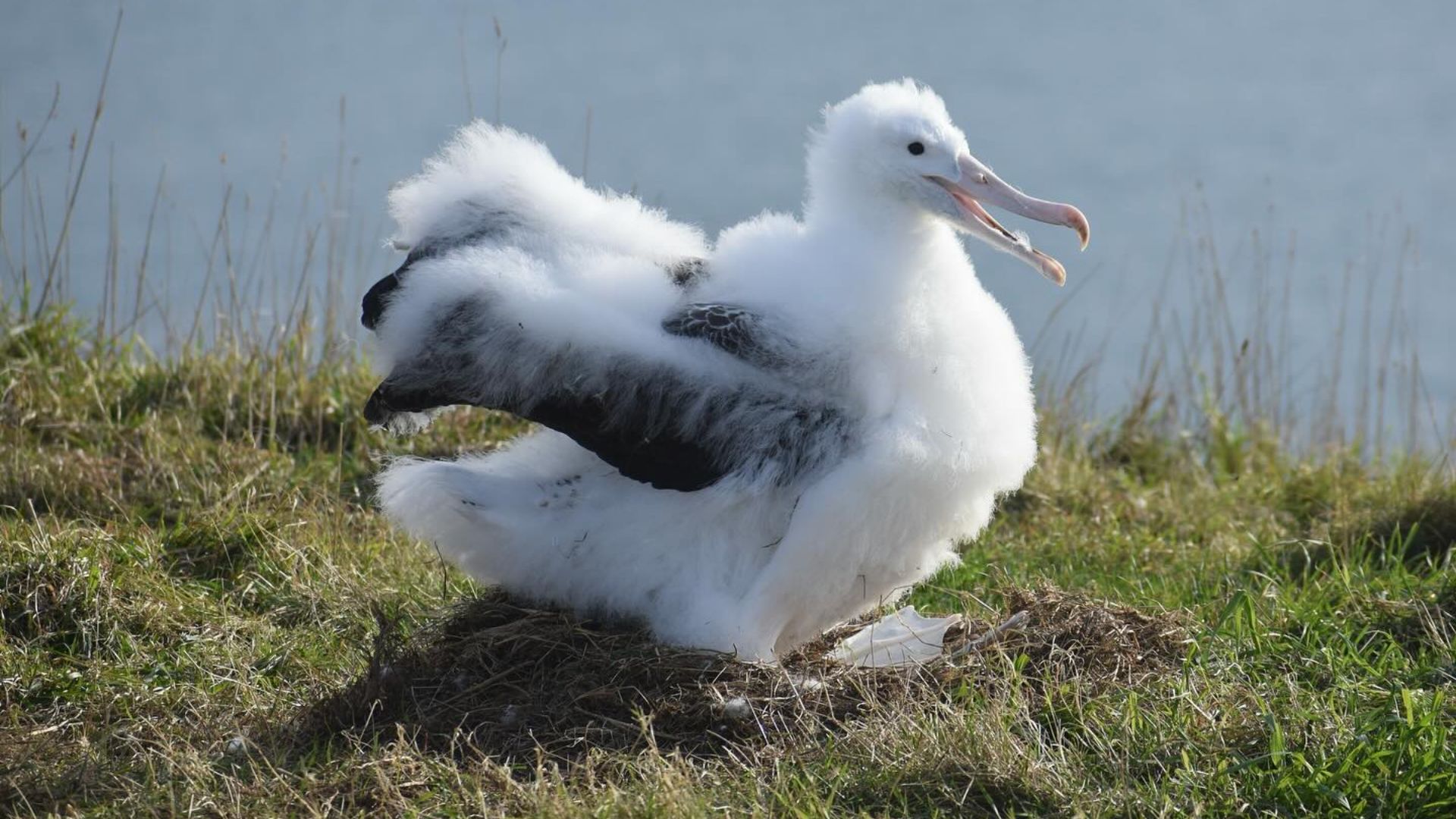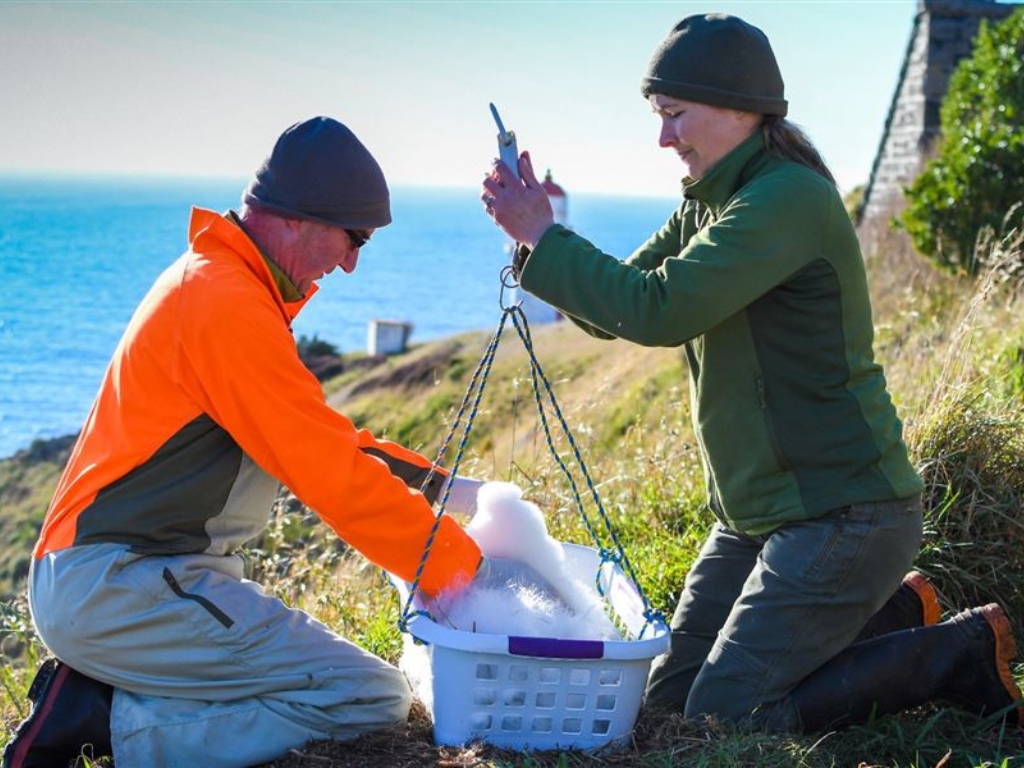Toroa (northern royal albatross) soar the skies over the sea, sleep on the waves and don’t return to land for years. When it’s time to return to solid ground, some go to Taiaroa Head at the end of the Otago Peninsula to breed and raise chicks. Last season was a record-breaker, and this year is a tie.

In 2023, a record 33 chicks fledged, and this season equalled that record, despite an early setback when plastic killed a ten-day-old chick.
“We’re on-par with last season regarding fledging,” says Laura Findlay from the Royal Albatross Centre.
The success is due to the dedicated care of staff and one of New Zealand’s longest-running predator control programs.
The care and challenges of raising royal albatross chicks
Albatross breed every two years, as raising a chick takes up all the parents’ energy.
A needy mouth to feed takes an enormous toll on adult albatross. The demands of nesting are so great that albatross need a full year of foraging off the coast of South America to recover.
Couples help each other out: mum and dad take turns incubating the egg and guarding the chick until it’s big enough to be left alone, around the middle of March. Parents deliver food every few days. The main menu items are arrow squid, fish, and octopus.
DOC staff also help by monitoring eggs and replacing any infertile eggs with dummies to retain pairs in case they are needed as foster parents.
Staff also carefully monitor the chicks by weighing them in a laundry basket once a week to ensure they’re on track and healthy enough to fly away come spring.

Flystrike is a massive issue for hatchlings. Escaping an egg takes three to five days, giving ample time for flies to lay maggots. Peppermint oil and fly traps made some difference, but in recent nesting seasons, all eggs have been hatched in an incubator to lower this risk further.
Adult albatrosses typically weigh around 8kg, but chicks can be even heavier. A body mass of around 10kg is needed to get them through a chilly Otago winter while they grow three metres of wings; chicks look like adults when they finally fledge in September.
Guardians of the colony
Since the 1940’s, predator control has been an essential and constant job at the colony. A variety of traps protect the birds from rodents, mustelids and cats. Possums are not much of an issue thanks to the Otago Peninsula Biodiversity Group, which has been targeting them for years.
Though not a direct threat, rabbit management is also important for predator control. When rabbit numbers spike, stoat numbers soon follow. When chicks hatch, stoats will change their menu to include albatross.
Cats will also readily prey on albatross chicks. “We end up with feral cats when domestic cats are dumped, which does happen on the Otago Peninsula,” says Laura.
Grandma, Button, WO and GO

Close work with the birds means that staff get to know individuals, and everyone has their favourites.
Laura’s favourites are the oldest nesting couple of the season, WO and GO. Named for their band colours (white-orange and green-orange), they’re 44 and 40 years old, and their chick is often visible from the visitor centre windows.
Those are impressive ages, but the true legend of the colony was Grandma; she’s the oldest known bird here and lived to at least 60 years old. She was last seen in 1989 when she reared her final chick, Button. He’s now 35 and raising a chick of his own. Nearby, one of his sons, Toroa, is bringing up his chick.
Maintaining the mainland haven
Taiaroa Head is the only mainland breeding colony for the endangered royal albatross, but only one percent of the population nests here. Toroa mainly breed in the Chatham Islands.
A significant storm in 1985 damaged this Chatham Island colony. The storm removed large amounts of soil and vegetation, which affected their nesting there. Their slow breeding means numbers are still yet to recover.
But for now, the hard work of staff protecting the smaller colony at Taiaroa Head is making a difference for these majestic birds.

